Although summer is coming to an end, it doesn’t mean you have to abandon your garden! You may be familiar with some vegetables that can still get planted in your area, but that isn’t all. Many perennial flowers are perfectly suited for fall planting. While these won’t bloom until spring or early summer next year, you can rest easy knowing that your hard work will pay off soon. We wanted to help you get a jump on fall flower planting. So, below is a list of nineteen perennial flowers you should plant in September.
1. Bearded Iris
Planting bearded iris (Iris germanica) rhizomes in September will ensure there is ample time to establish solid root systems before their next growth period. This lovely flower is native to the Mediterranean, so it prefers full sun. However, it can tolerate occasional partial shade.
The bearded iris blooms in late spring, when it showcases stunning purple and yellow blossoms. It grows up to three feet tall and two feet wide. Flower lovers in USDA Hardiness Zones 3 to 9 can enjoy this plant in their garden.
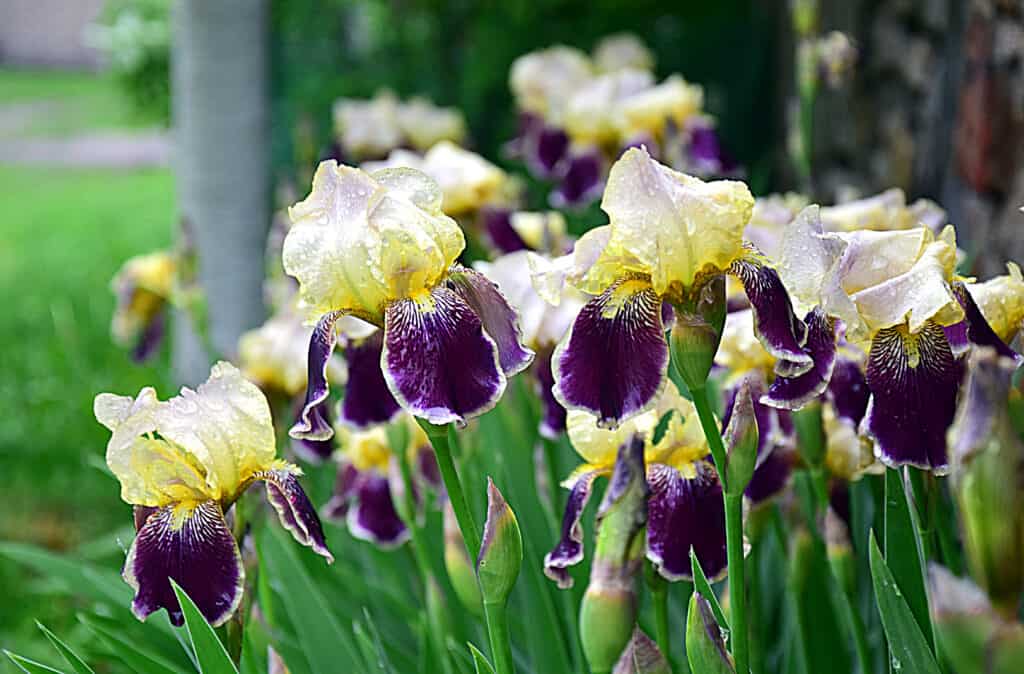
Planting bearded iris rhizomes in September will ensure there is ample time to establish solid root systems before their next growth period.
©Krzysztof Bubel/Shutterstock.com
2. Beard Tongue
Plant some long, slender beard tongue (Penstemon spp.) flowers in the fall to get incredible flowers the following spring. The blossom colors will vary based on species and/or cultivar. However, the showy blooms attract a range of pollinators. These lovely flowers thrive in USDA Hardiness Zones 5 to 8.
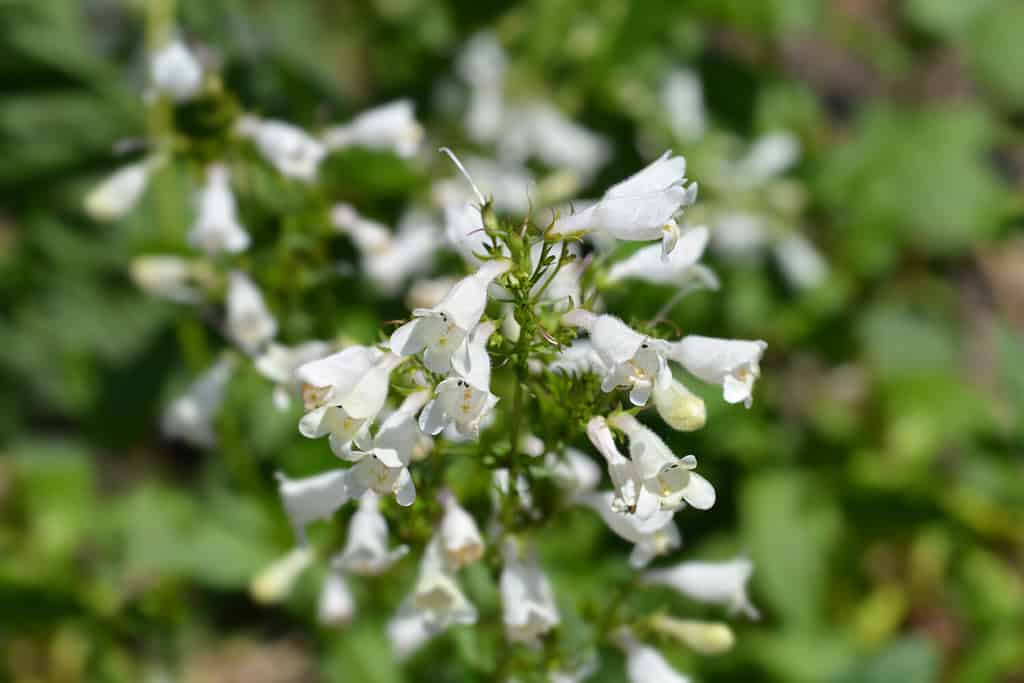
Beard tongue flowers are slender and delicate. They come in an array of colors.
©Nahhana/Shutterstock.com
3. Bee Balm
Bee balm (Monarda didyma) is a stunning flower with many uses that belongs to the Lamiaceae (mint) family. It reaches up to four feet tall and three feet wide and grows best in USDA Hardiness Zones 4 to 9. Its stunning red blossoms arrive in the summer. Pollinators and hummingbirds adore this flower. Additionally, it has a long history of use in traditional herbal remedies.
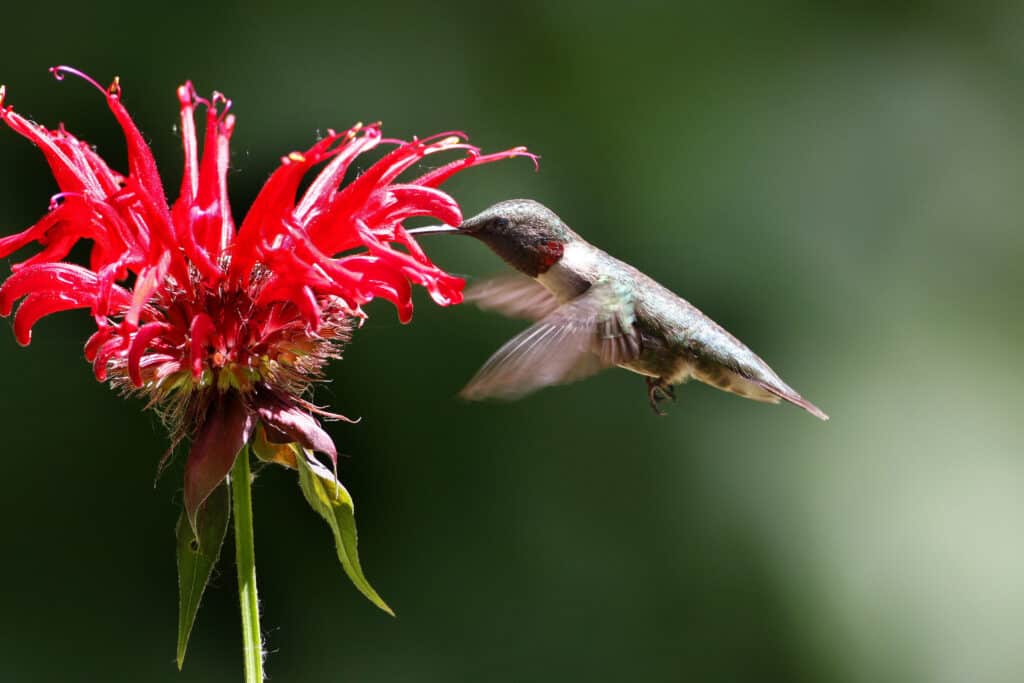
Hummingbirds adore bee balm!
©Chris Alcock/Shutterstock.com
4. Black-Eyed Susan
One popular perennial flower is the black-eyed Susan (Rudbeckia hirta). This beautiful plant is a member of the Asteraceae (Aster Family) and grows best in USDA Hardiness Zones 4 to 9. It thrives in full sun and well-drained soil. This flower has a high drought tolerance. When it reaches maturity, it will stand approximately three feet tall. Gorgeous flowers in orange, red, and yellow begin showing up in March and last through the fall. Birds and butterflies will frequent these stunning flowers, so you will get ample wildlife enjoyment.
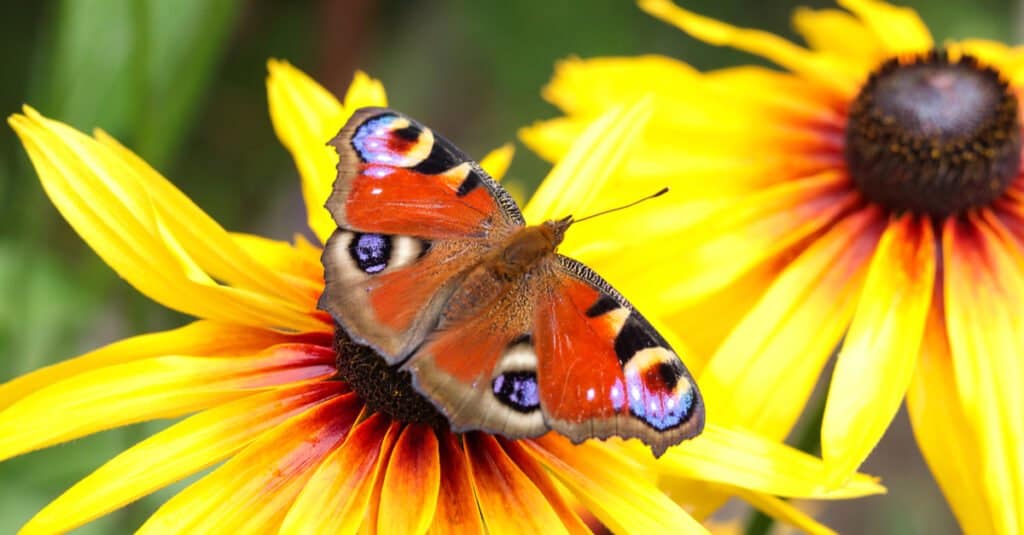
Black-eyed Susans are drought-tolerant and beloved by butterflies.
©iStock.com/Mariia Romanyk
5. Blanket Flower
The blanket flower (Gaillardia spp.) is native to the Americas and a member of the Asteraceae (Aster) family. They grow up to 1 ½ feet tall. Fans can choose one of many gorgeous flower colors since there are approximately thirty species of blanket flowers. Those range from yellow, orange, and red, along with multi-colored blossoms that bloom from summer to early fall. They are winter hardy in Zones 2 to 11 and prefer loose soil and full sun.
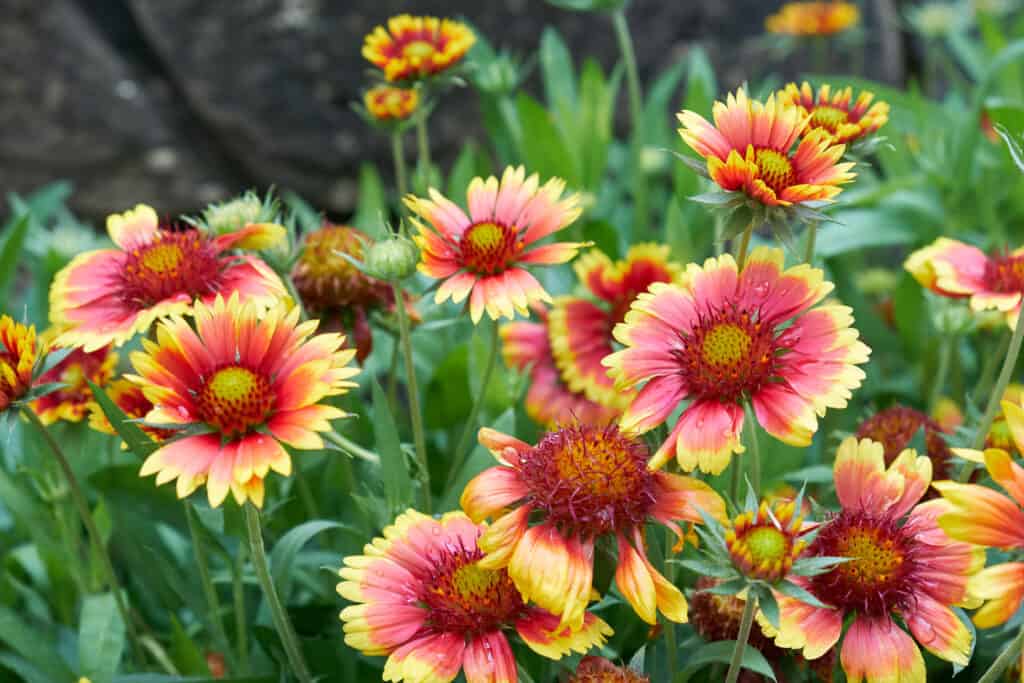
Blanket flowers survive in most growing regions.
©iStock.com/Iseo Yang
6. Blazing Star
Another stunning member of the Asteraceae (Aster) family is the blazing star (Liatris spicata). It is native to the Eastern United States but grows well in Zones 3 to 8. The shocking reddish-purple blossoms attract birds and butterflies when they bloom mid-summer. Plant your blazing star in average soil and in an area that receives full sun. Leave plenty of room since it reaches 2 to 4 feet tall and 1 ½ feet wide.
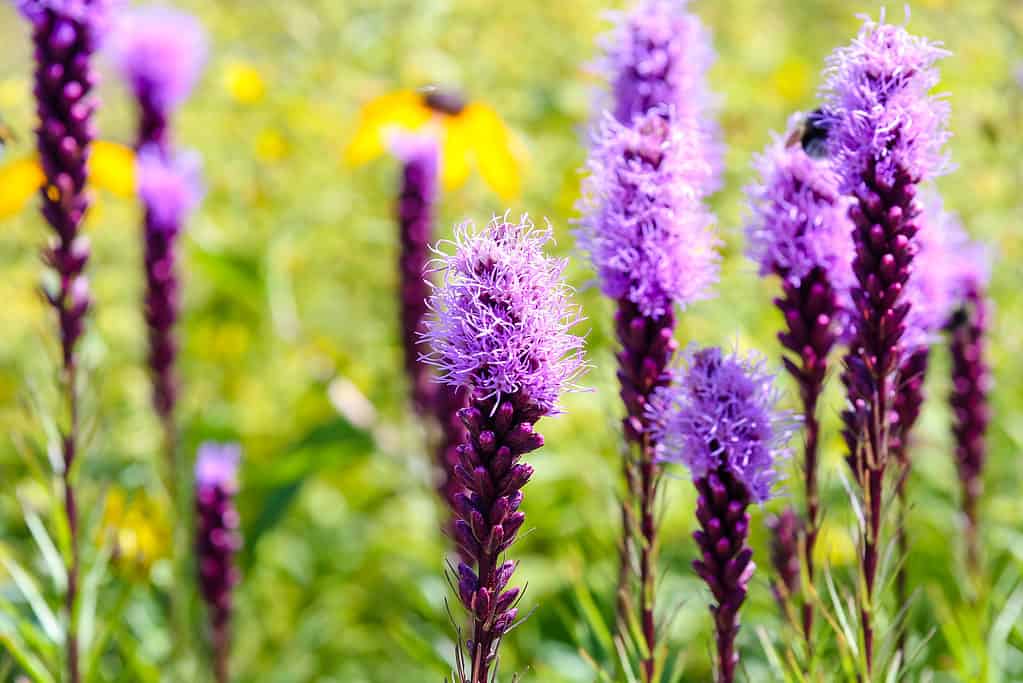
Birds and butterflies absolutely love the beautiful blazing star flowers.
©iStock.com/todamo
7. Bleeding Heart
Bleeding heart (Lamprocapnos spectabilis) flowers thrive in USDA Hardiness Zones 3 to 9. They can grow up to three feet tall and wide. They are native to North China, Japan, Korea, and Siberia, so they tolerate some cold well. Plant your bleeding hearts in September and reap the reward of stunning blossoms early the following summer. The showy pink and white flowers will only stick around for a few months. So enjoy them while you can!
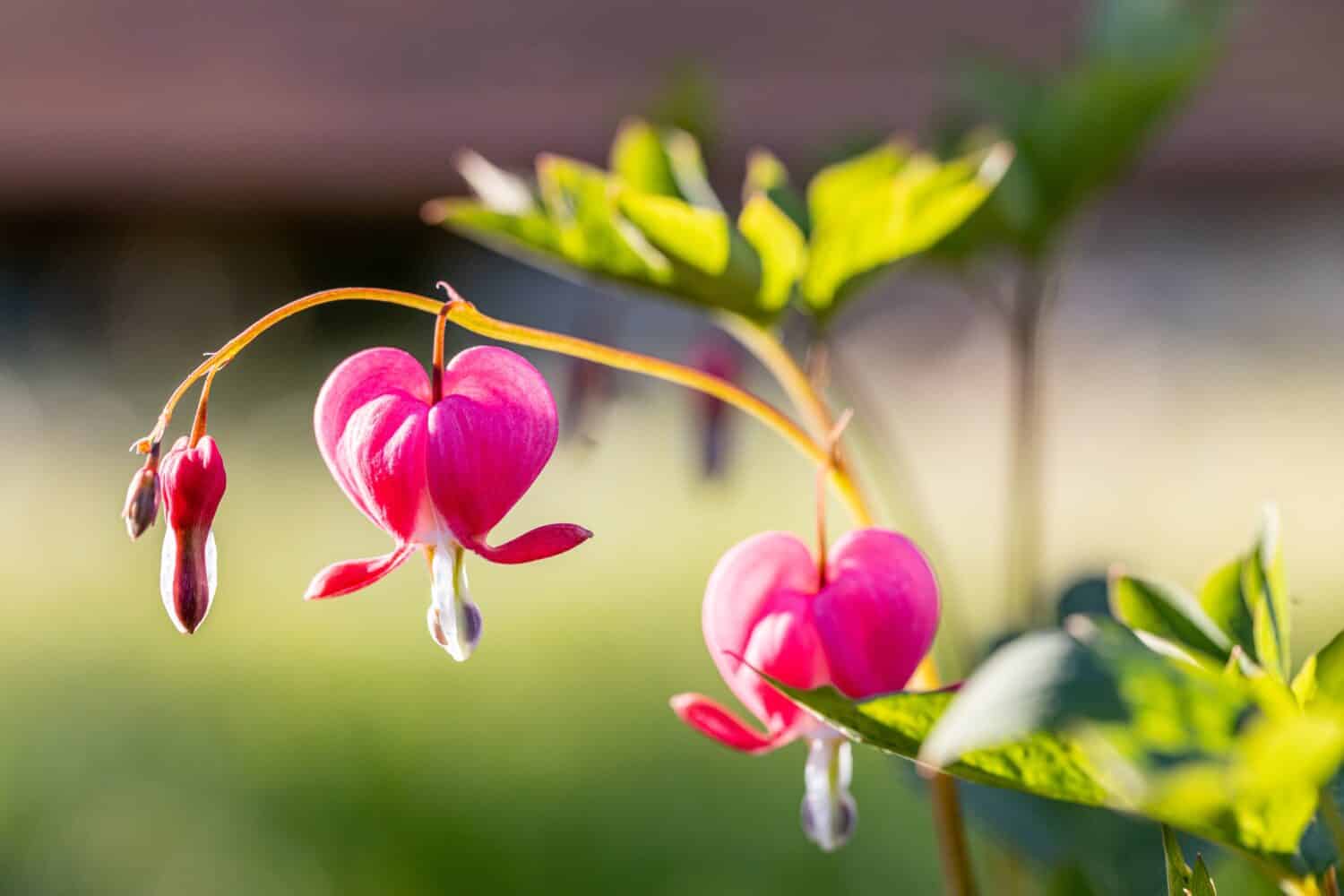
Bleeding heart flowers are relatively cold tolerant so that you can plant them in most growing regions.
©Diana Hlachova/Shutterstock.com
8. Brunnera
Plant brunnera (Brunnera macrophylla) in your Zone 3 to 7 garden if you are ready for an eye-catching treat. This perennial is native to Turkey and shows off spectacular bright blue flowers every spring. While the flowers are stunning on their own, the deep green foliage helps intensify their appearance. This plant can grow up to a foot and a half tall with an even wider spread (two and a half feet). It is a low-maintenance plant that can tolerate shade and makes an exceptional ground cover.
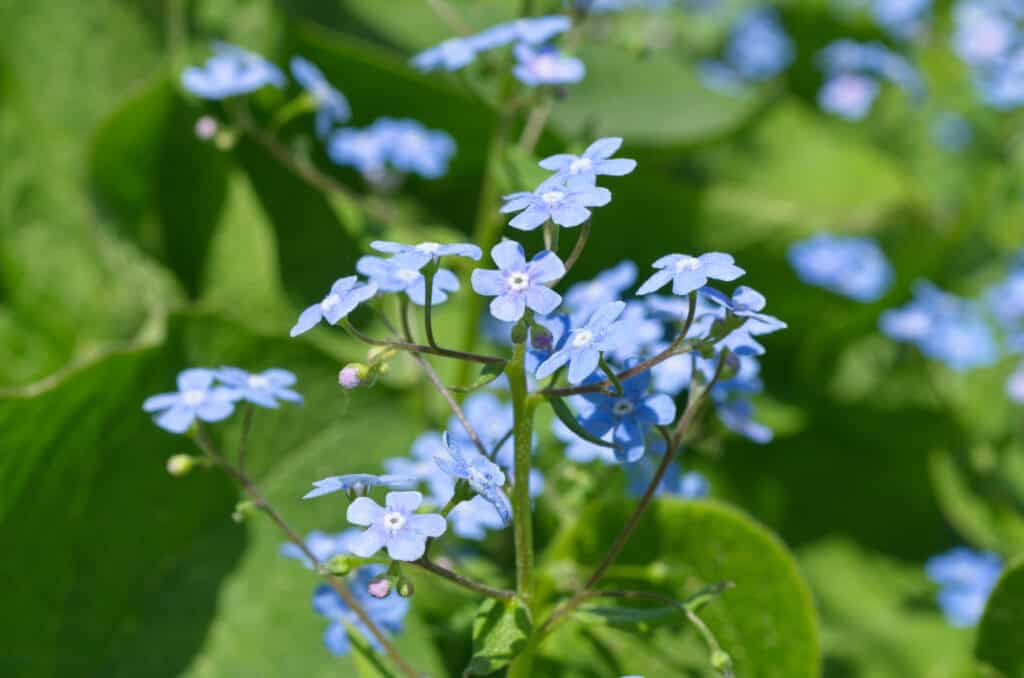
The bright blue of brunnera blossoms gets offset by the deep green foliage.
©iStock.com/koromelena
9. Coneflower
While the official name of this lovely flower is coneflower, many people are most familiar with its scientific name, Echinacea purpurea. Coneflower (or Echinacea) is prized for its medicinal value in holistic care. However, the gorgeous flowers cannot be discounted. Those living in Zones 3 to 8 can plant this perennial. It develops pink flowers every summer that have a distinctly droopy appearance. This plant can reach up to five feet tall when grown in its preferred conditions. Plant it in a location that receives full sun or at least partial shade. Then, sit back and watch the butterflies and birds flock to the blossoms.
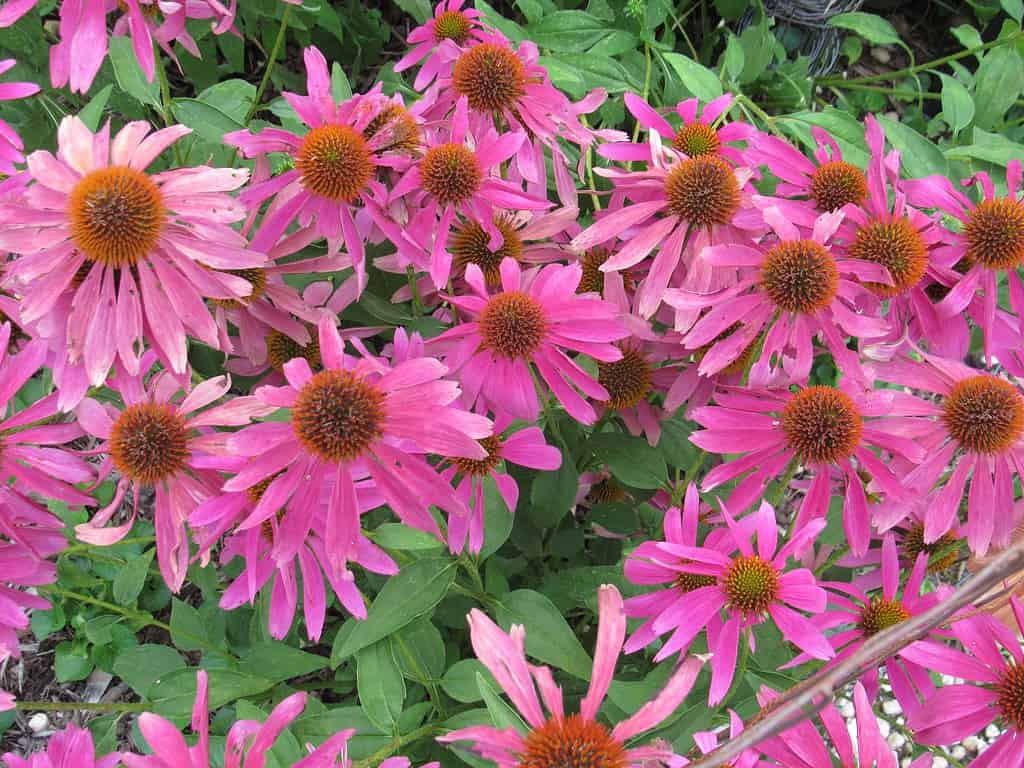
Some coneflowers are common in traditional medicine practices.
©Sheila Chandler/Shutterstock.com
10. Coral Bells
This North American native grows best in Zones 4 to 9. Coral bells (Heuchera americana) is a low-maintenance plant that can tolerate partial shade or full sun. All it needs is rich, well-draining soil kept consistently moist. Coral bells grow to around two feet tall and one and a half feet wide. It develops soft whitish-green flowers in the summer.
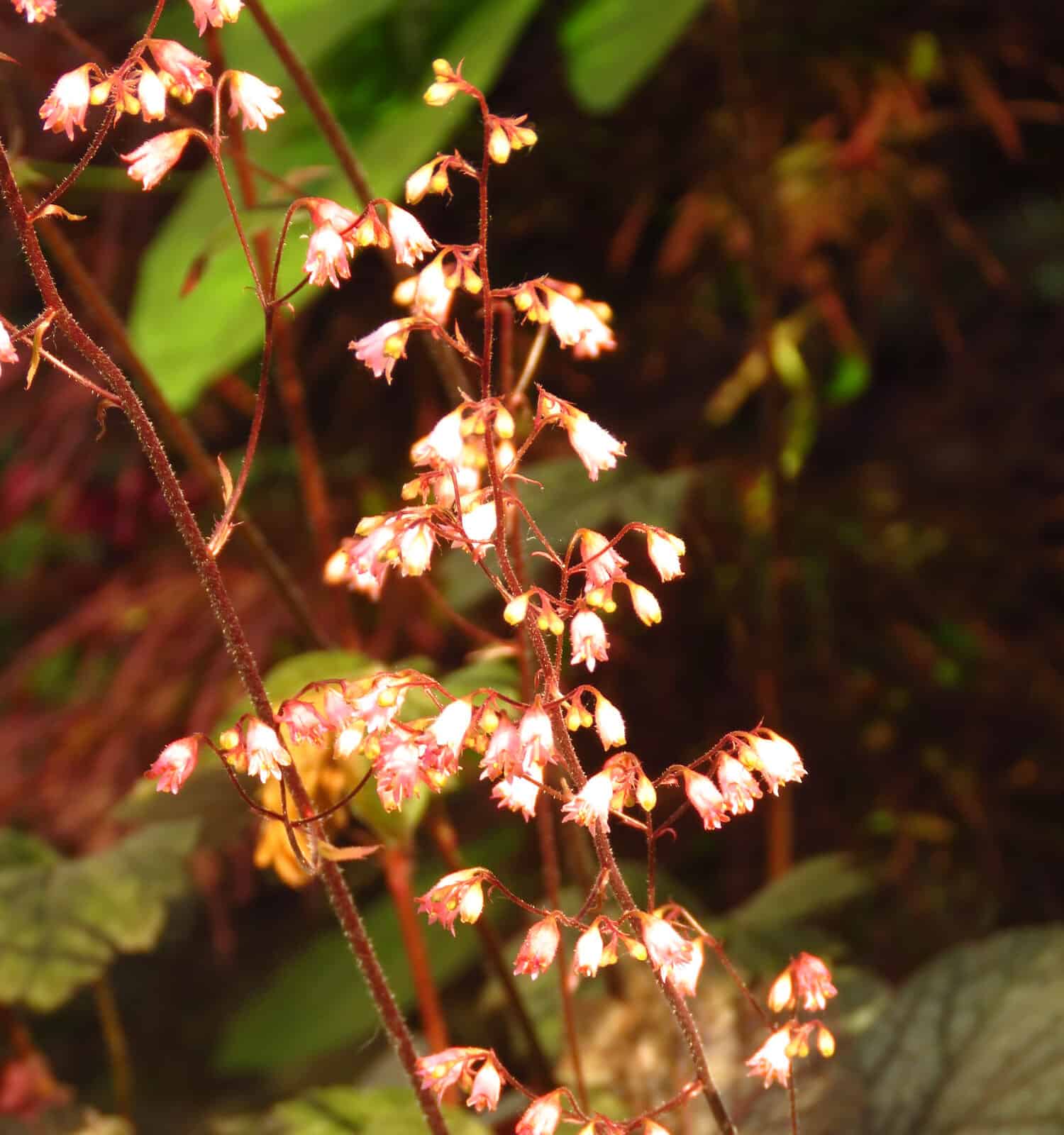
Coral bells are a low-maintenance plant with stunning and delicate flowers.
©Przemyslaw Muszynski/Shutterstock.com
11. Columbine
Columbine (Aquilegia vulgaris) is the state flower of Colorado. But that doesn’t mean you should avoid growing it in your garden! This delicate blue and white flower arrives every spring and puts a smile on faces. In optimal conditions, the plant will reach roughly three feet tall. While native to Europe, it will happily grow in USDA Hardiness Zones 3 to 8. The showy flowers increase when offered full sun or at least partial shade. And when they do, the hummingbirds arrive in droves!
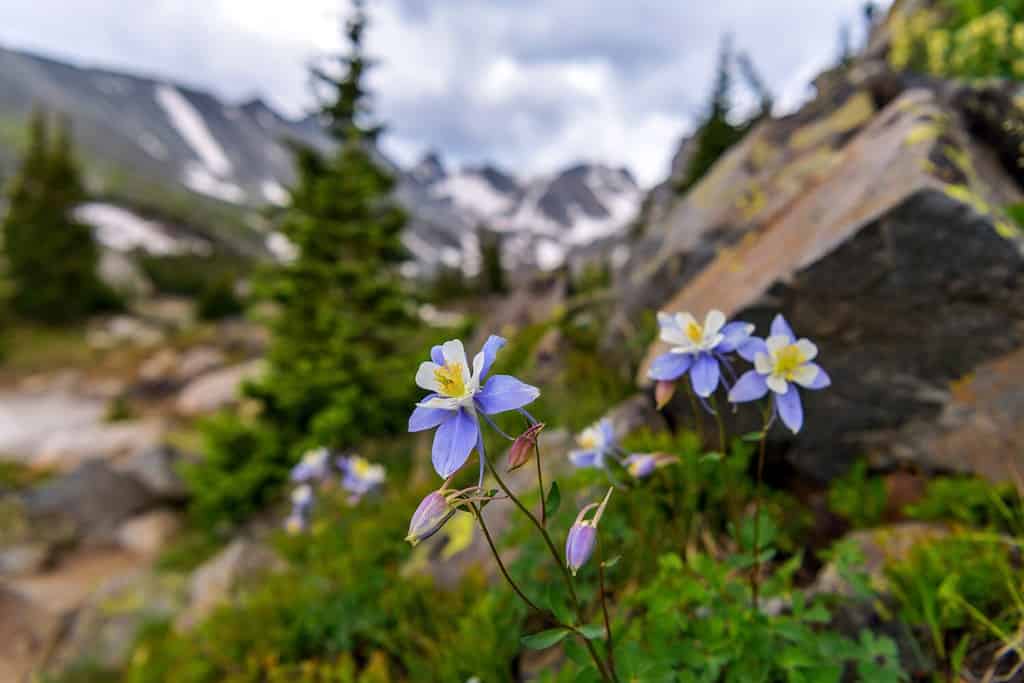
Columbine is the state flower of Colorado but that doesn’t mean you should avoid growing it in your garden!
©Sean Xu/Shutterstock.com
12. Gaura
Don’t worry if you haven’t heard of Gaura (Gaura lindheimeri). This spectacular plant has a relatively narrow native region. It was originally found only in Oklahoma, Louisiana, and Texas. However, it will happily grow in Zones 5 to 9. All it asks for is full sun and rich soil. It is drought and heat-tolerant, which is good news for warm-weather gardeners. This perennial grows up to five feet tall and two feet wide. It showcases delicate white and pink blossoms in late summer and early fall.
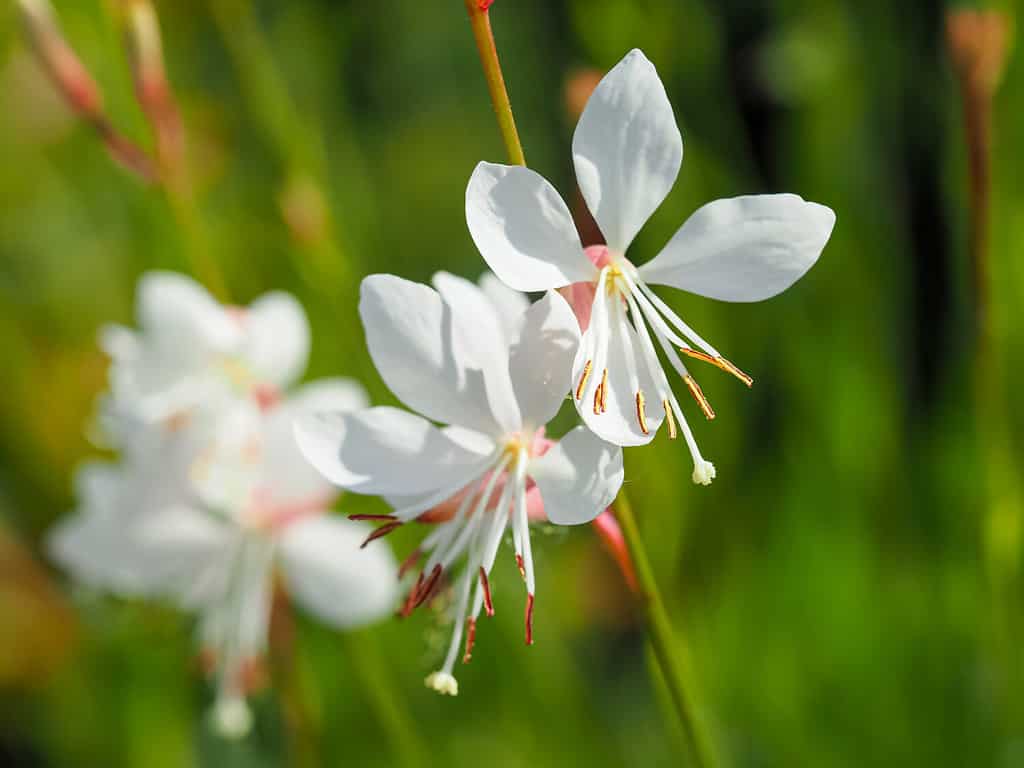
has a relatively narrow native region as it was originally found only in Oklahoma, Louisiana, and Texas.
©AngieC333/Shutterstock.com
13. Grape Hyacinth
Beautiful grape hyacinth (Muscari armeniacum) plants are native to Europe and belong to the Liliaceae (Lily) family. They grow best in Zones 3 to 9. This flower tolerates average soil but prefers full sun or partial shade. The bell-shaped flowers produce an almost musky scent when they arrive every spring. They are small, bell-shaped, and grow in beautiful cobalt-blue clusters.
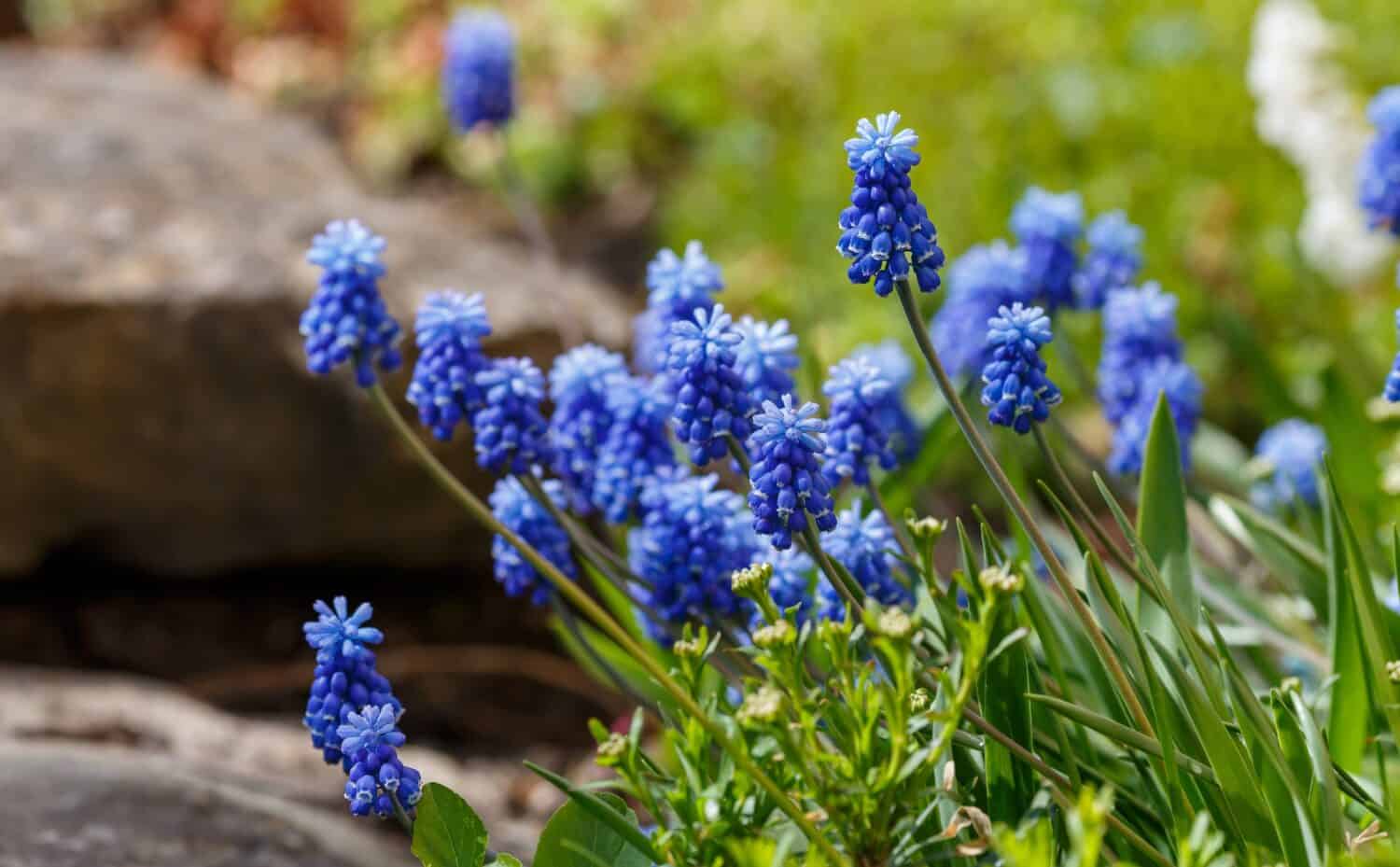
Jaw-dropping grape hyacinth flowers bloom in the spring.
©Flower_Garden/Shutterstock.com
14. Hellebores
Suppose you have a hard time waiting for even late spring blooms. Then, plant one of twenty-two hellebores (Helleborus spp.) species. This early-blooming flower is native to Morocco, parts of Asia, and Europe. It grows best in Zones 5 to 8 when planted in fertile soil and in a location with partial or dappled shade. They reach about fifteen inches tall. Their singular flowers range in color from yellow, pink, purple, white, and red and blossom around late winter or early spring. But this plant is highly toxic. So, it is not suitable for gardens with pets or children frequenting them.

Hellebore is an early-blooming flower native to Morocco, parts of Asia, and Europe.
©Mike Russell/Shutterstock.com
15. Hosta
Hosta (Hosta spp.) lovers will be thrilled to learn that there are over seventy species to choose from. And if that wasn’t enough, consider choosing one of the hundreds of cultivars! This plant group ranges in size drastically. Some may only reach a few inches tall, while others grow over five feet high. Their lovely flowers bloom every summer. Consider adding these stunning flowers to your garden if you live in Zones 3 to 8.
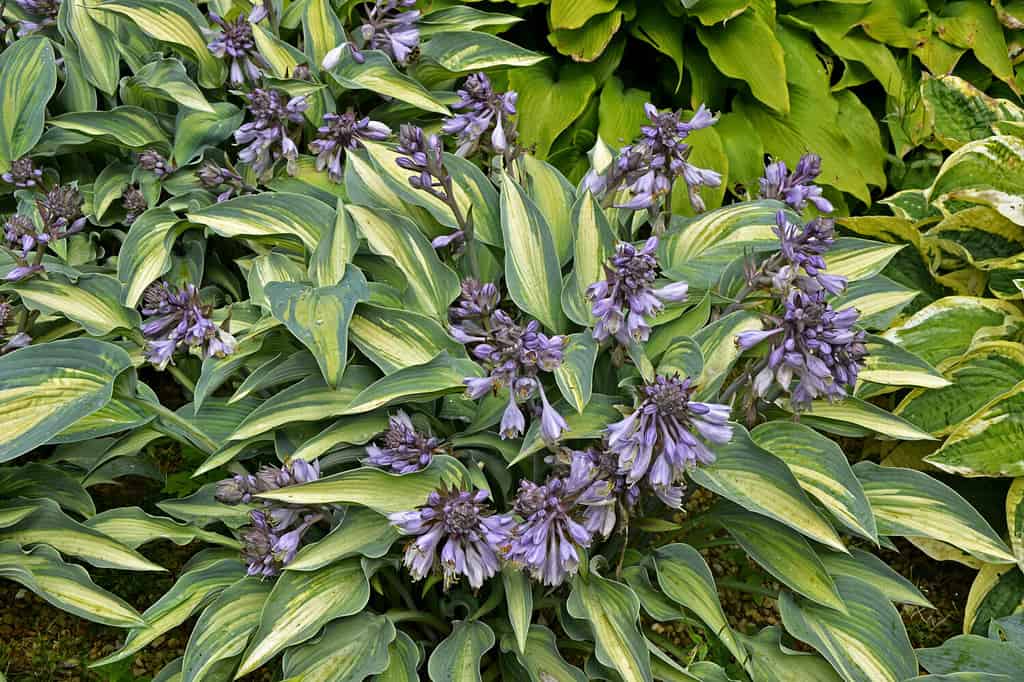
There are over seventy species of
Hostato choose from.
©Gardens by Design/Shutterstock.com
16. Lavender ‘Munstead’
There are so many lavender varieties that it can be hard to decide which to plant. We suggest considering lavender ‘Munstead’ (Lavandula angustifolia), otherwise known as English lavender. These perennial flowers grow best in USDA Hardiness Zones 5 to 8. It prefers drier conditions, so it needs little water and is drought-tolerant. The spectacular lavender blue flowers attract butterflies when they bloom every summer. This particular species is ideally suited for harvesting lavender oil. And the best news is that the plants do not grow too large. They only reach roughly one and a half feet tall and wide at maturity.
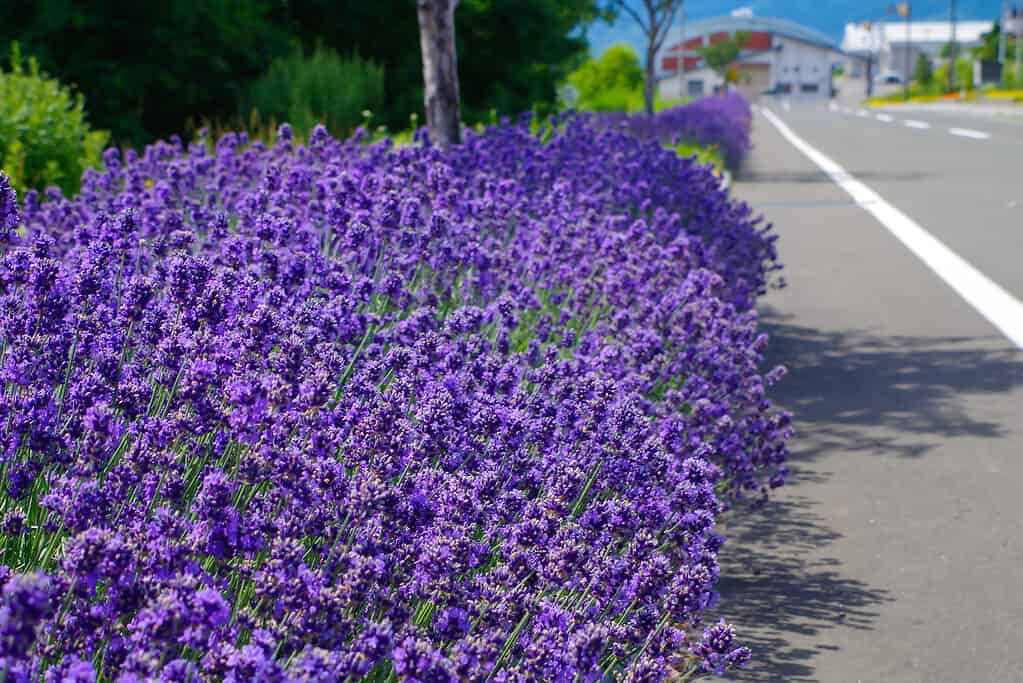
English lavender is perfect for lavender essential oil due to its potent fragrance.
©ajisai13/Shutterstock.com
17. Lily
While most of us refer to lilies like they are a species, lily (Lilium spp.) is actually a larger group that boasts nearly 100 species. They all belong to the Liliaceae family, and no two are alike! Depending on which species you choose to plant, they could grow anywhere from one to eight feet tall and up to two feet wide. Every species shows off a stunning floral display between early spring and late fall. You can successfully grow these flowers in Zones 4 to 9. They are low-maintenance plants that can survive in partial shade or full sun, depending on the variety.

There are over 100 lily species to choose from!
©CoinUp/Shutterstock.com
18. Sage
Get double duty out of your sage (Salvia officinalis) plant. This flavorful herb belongs to the Lamiaceae (mint) family. It is perennial so you can get a regular harvest year after year. But perhaps the biggest surprise is that it also produces tons of gorgeous blossoms annually. It grows up to two and a half feet tall. However, there are shorter cultivars if you are concerned about space. Sage thrives in sunny spots and well-draining soil in USDA Hardiness Zones 3 to 8. The jaw-dropping lavender flowers grow on spikes and attract birds, bees, and hummingbirds. They typically bloom in late spring or early summer.
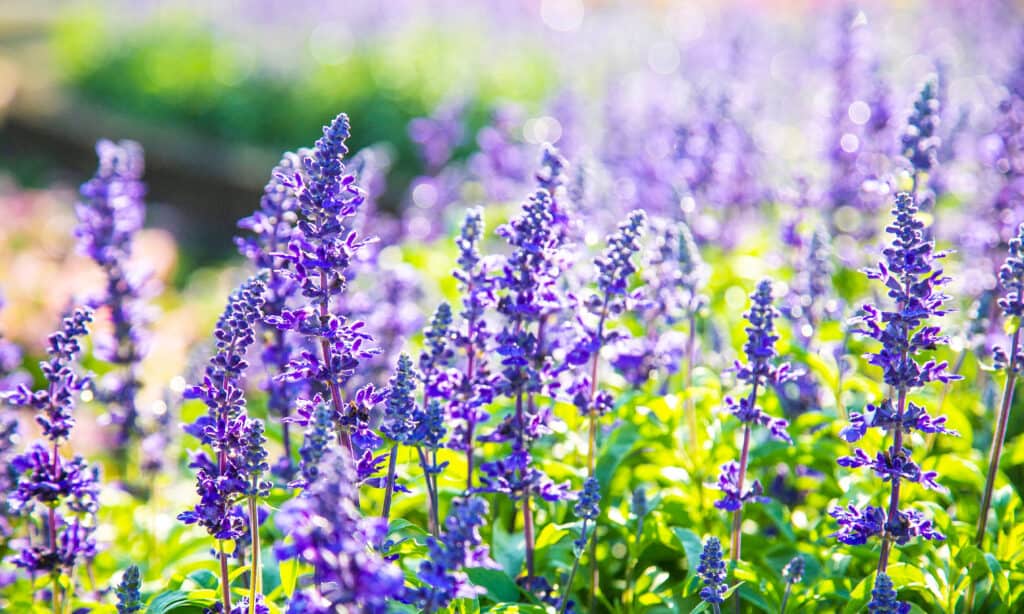
You may only think of sage for its culinary applications. But this herb also boasts jaw-dropping flowers.
©liewluck/Shutterstock.com
19. Shasta Daisy
Consider adding Shasta daisies (Leucanthemum × superbum) to your garden for a refreshing annual floral display. They are a hybrid that belongs to the Asteraceae (Aster) family and grow best in Zones 4 to 9. These lovely flowers reach up to three feet tall and two feet wide. These perennial flowers arrive in mid-summer to early fall and show off stunning white rays with a bright yellow center. This flower does best when planted in a location that receives full sun and has well-draining soil.
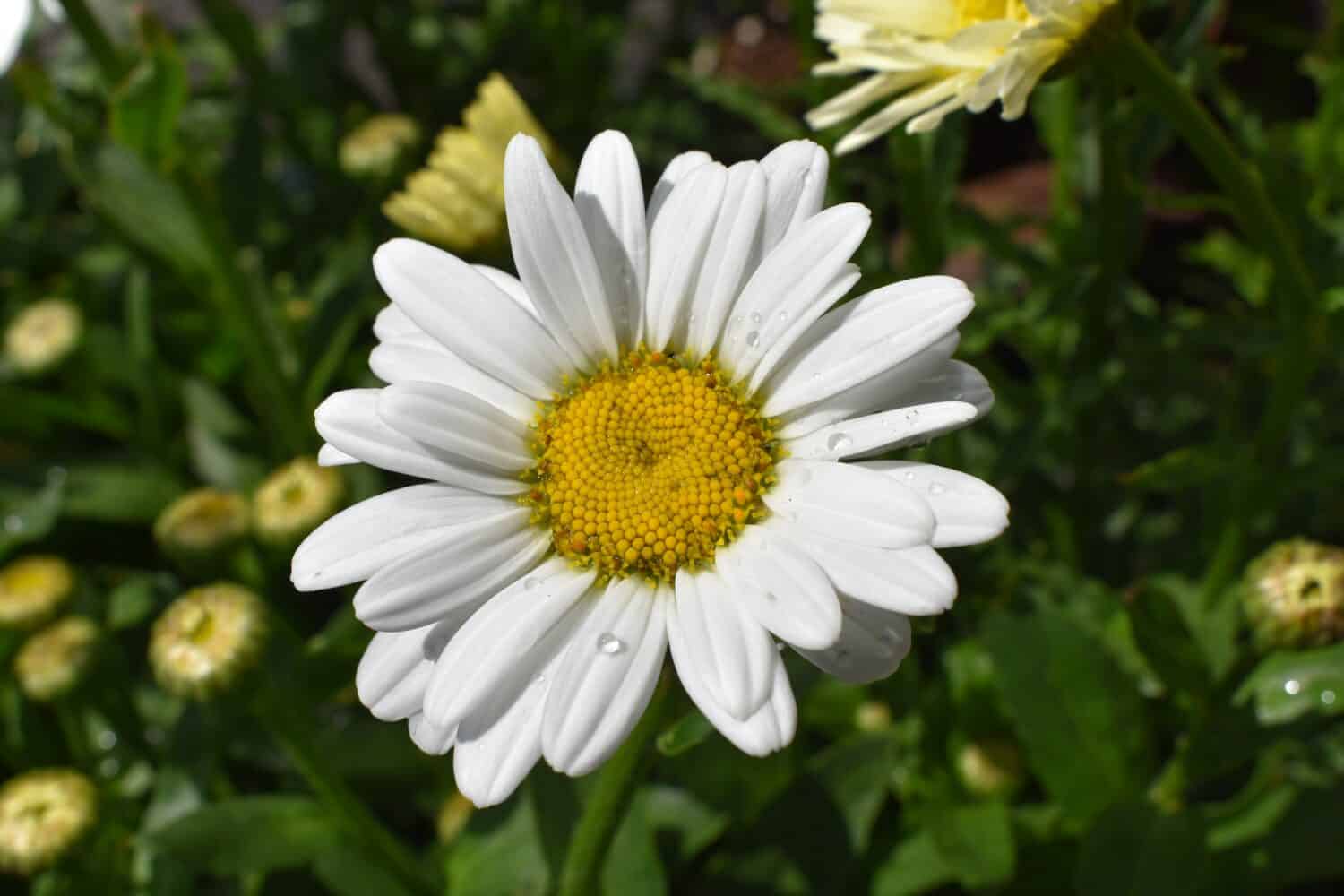
Shasta daisies are a beautiful hybrid.
©Terra Gardens/Shutterstock.com
Summary of 19 Perennial Flowers You Should Plant in September
| Number | Flower |
|---|---|
| 1 | Bearded Iris |
| 2 | Beardtongue |
| 3 | Bee Balm |
| 4 | Black-eyed Susan |
| 5 | Blanket Flower |
| 6 | Blazing Star |
| 7 | Bleeding Heart |
| 8 | Brunnera |
| 9 | Coneflower |
| 10 | Coral Bells |
| 11 | Columbine |
| 12 | Gaura |
| 13 | Grape Hyacinth |
| 14 | Helleborus |
| 15 | Hosta |
| 16 | Lavender ‘Munstead’ |
| 17 | Lily |
| 18 | Salvia |
| 19 | Shasta Daisy |
The photo featured at the top of this post is © Vahan Abrahamyan/Shutterstock.com
Thank you for reading! Have some feedback for us? Contact the AZ Animals editorial team.







